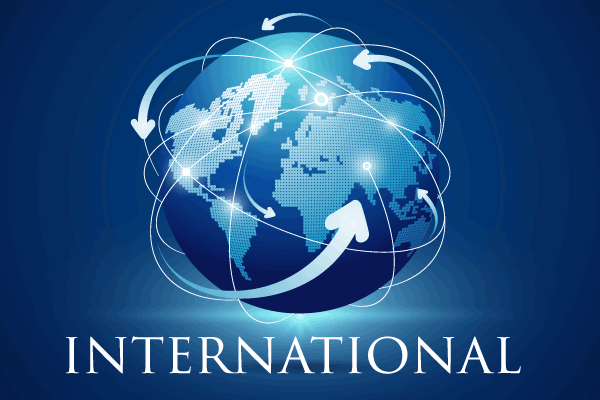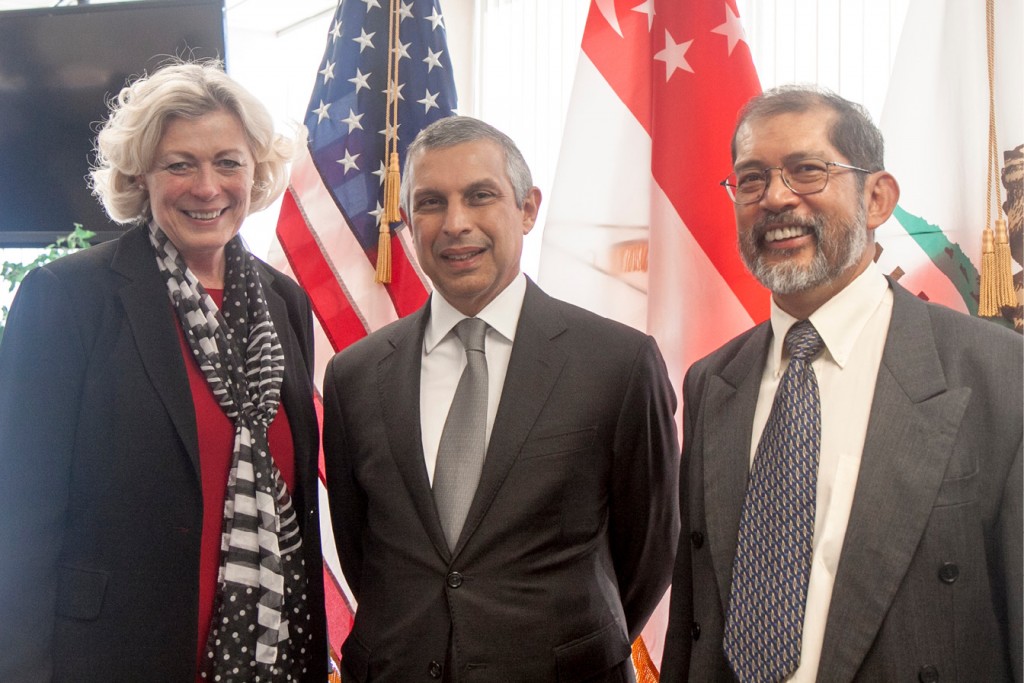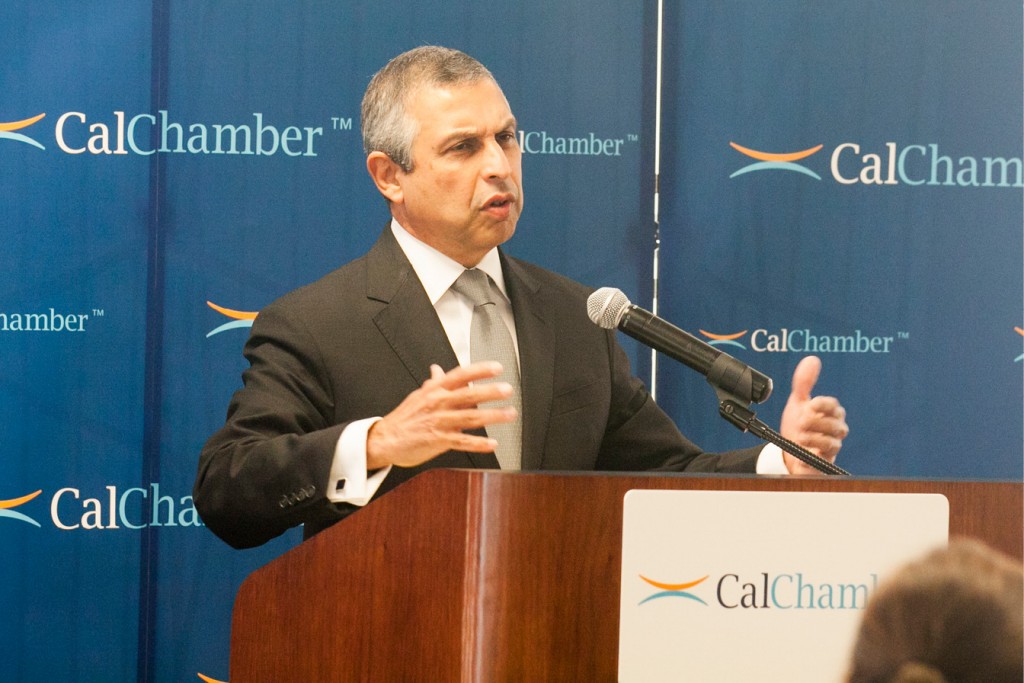 The strong trading ties between Singapore and the United States, as well as California, were the focus on October 6 as the California Chamber of Commerce hosted an International Luncheon with the Consulate General of Singapore in celebration of Singapore’s 50th National Day.
The strong trading ties between Singapore and the United States, as well as California, were the focus on October 6 as the California Chamber of Commerce hosted an International Luncheon with the Consulate General of Singapore in celebration of Singapore’s 50th National Day.
The 50th anniversary of independence is a milestone in the journey of an economic miracle.
“Singapore is one of the most highly educated and strongest economies, not just in the Pacific Rim, but in the world,” said CalChamber President and CEO Allan Zaremberg to the roomful of attendees. “Singapore has taken itself in 50 years through independence and become a world leader.”
Singapore is a parliamentary republic, located between Malaysia and Indonesia. Once a colony of Great Britain and part of the East India Company, Singapore has been a major Asian port for centuries.
The country formally separated from Malaysia on August 9, 1965; National Day commemorates that independence.

U.S. Integral to Independence
With its strategic location, connectivity, networks, and business-friendly policies, Singapore has consistently been ranked the top country in the world to do business, explained Ambassador Ashok Kumar Mirpuri, Singapore Ambassador to the United States.
The United States was instrumental in helping Singapore become a globalized state. U.S. companies invested in Singapore extensively and today Singapore holds more U.S. investments than anywhere else in the Asia Pacific.
“Now think of that,” Ambassador Mirpuri said. “A country that has 5 million people, smaller than the size of Rhode Island, your smallest state, has got more U.S. investments there than China and India combined.”
U.S. direct investment to Singapore totaled $179.8 billion in 2014. Foreign direct investment from Singapore into the United States was $20.6 billion.
Friendly Economic System
Ambassador Mirpuri explained that U.S. companies didn’t originally come to Singapore because they had innovation or “special sauce”—they came because Singapore was able to create “an economic ecosystem that is friendly to economic investments, a system that focuses on their people. Education is the number one reason for its success.”
Singapore is California’s 12th largest export destination worldwide, 7th largest in Asia, and the largest in the Association of Southeast Asian Nations (ASEAN). It is also a major base and launchpad for American companies to reach out to these regions, which are the fastest-growing and most dynamic in the world.
“Because we have partnered with the U.S. over 50 years and the scale of investment has grown and grown, and the quality of investments grown and grown, that today the U.S.-Singapore economic partnership means that many of your companies are doing very, very innovative work in Singapore, things that sometimes they don’t even do in the U.S,” the Ambassador said.
Free Trade Agreement
The U.S.-Singapore Free Trade Agreement, signed in 2004, was the United States’ first trade agreement with an Asian country and remains a key anchor and pathfinder for the United States’ strategic engagement of the region. Singapore’s enduring partnership with the United States is an important gateway to the promise and opportunities of the Asia-Pacific growth story.
“This agreement was important because it was the first free trade agreement the U.S. signed with any Asian country,” Ambassador Mirpuri said. “It has become the foundation for other free trade agreements the U.S. has done with Asia, including the Trans-Pacific Partnership.”

Trans-Pacific Partnership
Negotiators among the 12 Trans-Pacific economies for the Trans-Pacific Partnership Agreement (TPP) successfully concluded their wide-ranging trade negotiations on October 5.
The TPP includes the 12 Trans-Pacific Partnership economies of Australia, Brunei Darussalam, Canada, Chile, Japan, Malaysia, Mexico, New Zealand, Peru, Singapore, the United States and Vietnam.
The CalChamber supports the TPP trade agreement process as an important vehicle for economic integration throughout the Pacific.
The Ambassador explained that the next step in the process is the “legal scrubbing” and a chance for everyone to read it. After the 90-day period, U.S. President Barack Obama will decide if he will sign it and then the agreement will go to Congress for approval.
Ambassador Mirpuri said that as each country moves toward the ratification of the TPP, it is important for the U.S. to take an economic leadership role in the region.
“The TPP becomes so much more strategically important for the U.S.,” Ambassador Mirpuri explained. “The idea is to use this agreement to capitalize on your strengths, innovation and entrepreneurship, and combine that with the natural energy that you have in these people and combine that with the Asia Pacific to really become much more deeply engaged in the region, and this agreement gives you the incentive to engage.”
In addition to the U.S. approval, the 11 other countries have to ratify TPP as well, “and it won’t be easy in Japan or Australia or Vietnam,” Ambassador Mirpuri warned.
Ambassador Mirpuri expressed gratitude to the CalChamber for its leadership role in supporting TPP because, as he explained, “your members will benefit, whether they are small or medium-size businesses or even large, they will benefit from this agreement.”
Ambassador Mirpuri closed his remarks by looking forward to the next 50 years of economic partnership with the U.S., promising: “Singapore will be there by your side. When we’ve reached our 100th anniversary, we can speak even much more positively about this.”

